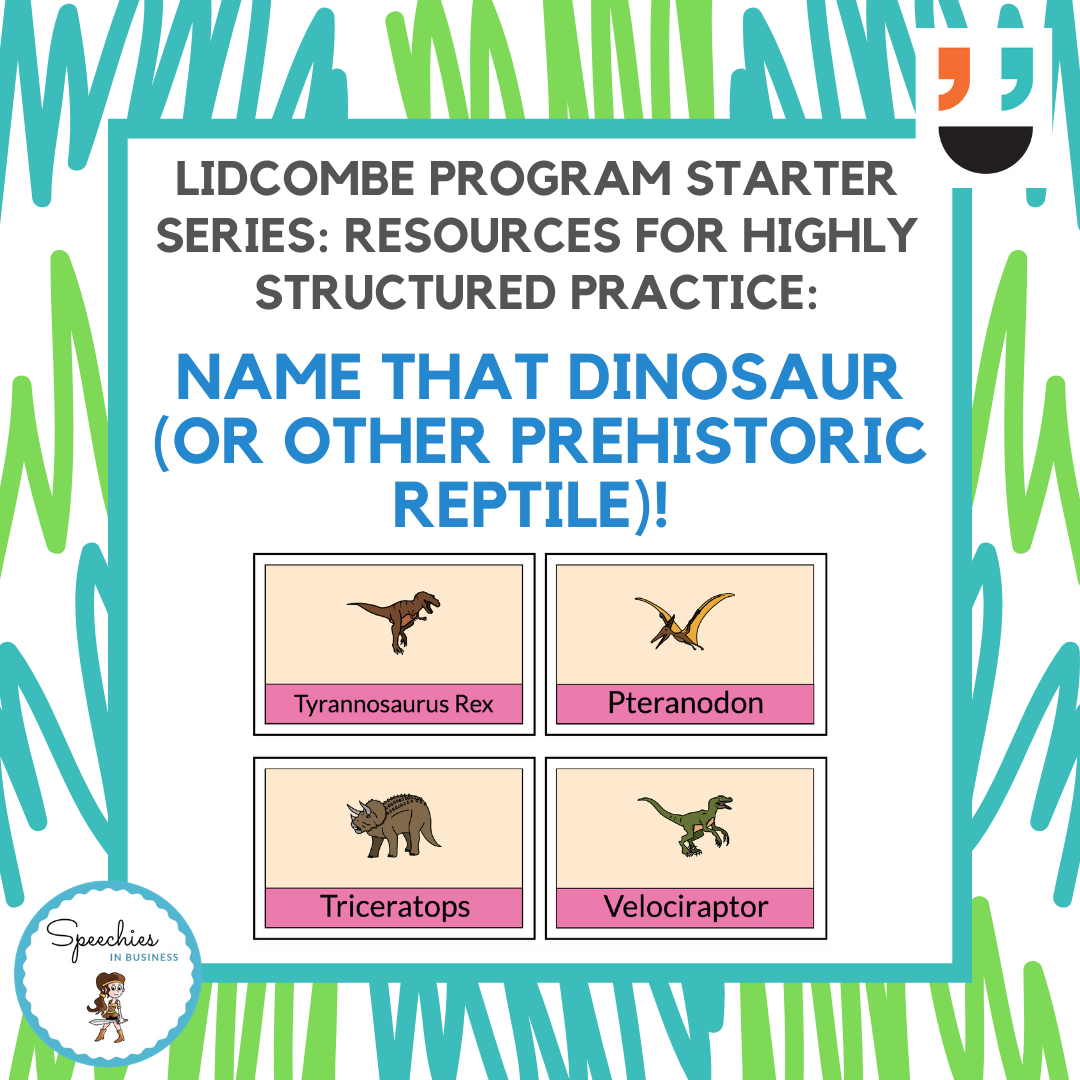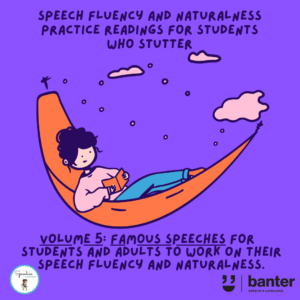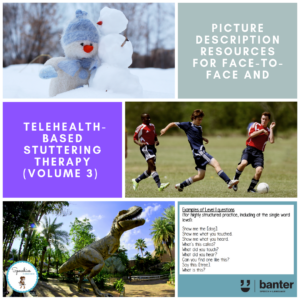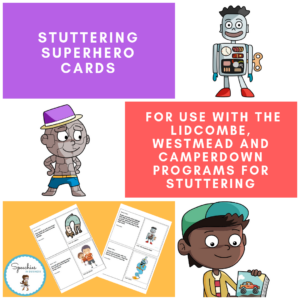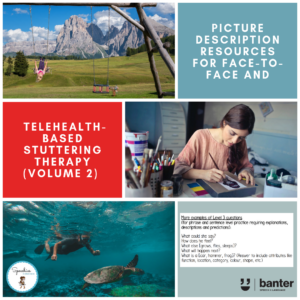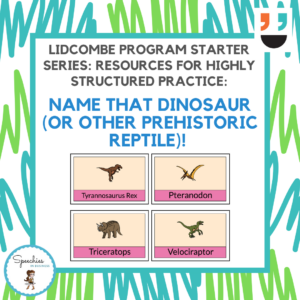(S109) Lidcombe Program Starter Series: Resources for Highly Structured Practice: Name that Dinosaur (or other Prehistoric Reptile)!
$5.99 including GST
With the Lidcombe Program for childhood stuttering, our first goal, usually, is to eliminate or virtually eliminate the child’s stuttering in ‘structured activities’ at home (early Stage 1). By ‘structured activities’, we mean that we set up the sessions deliberately in a way to get the child as fluent as possible, as quickly as possible, for 10-15 minutes a day.
Many preschoolers are fascinated by dinosaurs. In this 17-page resource, we use this common interest to help families practice smooth talking with many unfamiliar, polysyllabic words: the names of dinosaurs.
In this exercise, you will ask your child to name a dinosaur smoothly that you have just named. Many dinosaurs have polysyllabic names, so this exercise is a little bit harder for many children who stutter than simply repeating single or two syllable words (like ‘car’ or ‘table’).
Description
Name the dinosaur (or other prehistoric reptile) I just named. Which one did I point to? (Lidcombe Starter Series)
With the Lidcombe Program for childhood stuttering, our first goal, usually, is to eliminate or virtually eliminate the child’s stuttering in ‘structured activities’ at home (early Stage 1). By ‘structured activities’, we mean that we set up the sessions deliberately in a way to get the child as fluent as possible, as quickly as possible, for 10-15 minutes a day. You can read more about the Lidcombe Program here.
To encourage stutter-free speech, it’s a good idea to set up a calm environment. Usually, this means turning off the TV, distracting any siblings (and pets) with other activities, sitting on the floor or at a table with your child, and playing simple, age-appropriate games that encourage your child to speak at a level that assists them to stay fluent.
In our free ebook, we list 10 of our all-time favourite Lidcombe Program activities, including reading a picture book together, labelling games, lotto, glue and fishing games, memory, and binary choice activities.
These days, many children respond well to digital or computer-based resources, including children doing the therapy by telehealth and when busy families want to do the therapy ‘on the move’ (or between other things). The resource is designed for all devices and is suitable for highly structured practice.
Many preschoolers are fascinated by dinosaurs. In this 17-page resource, we use this common interest to help families practice smooth talking with many unfamiliar, polysyllabic words: the names of dinosaurs.
In this exercise, you will ask your child to name a dinosaur smoothly that you have just named. Many dinosaurs have polysyllabic names, so this exercise is a little bit harder for many children who stutter than simply repeating single or two syllable words (like ‘car’ or ‘table’).
If your child has difficulty repeating the name, break it into evenly spaced and timed syllables, e.g. ty-rann-o-sau-rus-rex. If this is still too hard for your child to say smoothly, turn the task into a binary choice question, using a question that your child can answer, e.g. ‘Which one do you like – the green one or the orange one?’ (top/bottom, big/small, scary/funny looking, etc).
On each page, we feature one ‘famous’ dinosaur. Choose this dinosaur to point at if your child has difficulty repeating some of the less well-known dinosaurs.
Don’t worry about correct pronunciation – yours or your child’s! The key goal is smooth talking!
Remember: You need to be trained by a qualified speech pathologist to do the Lidcombe Program properly. Among other things, you need to be able to distinguish between stuttering and stutter-free speech; and confident to give the therapy (including the required verbal contingencies) as set out in the Lidcombe Program Manual.
Over the years, we’ve found that the Lidcombe Program works best when parents and children enjoy doing home practice sessions together. This resource is designed to help – particularly in the early, highly structured part of the program, or whenever necessary to help children who stutter to get and stay fluent.
In our speech pathology clinic, we have found this resource useful. We hope you do too!

